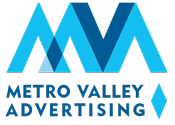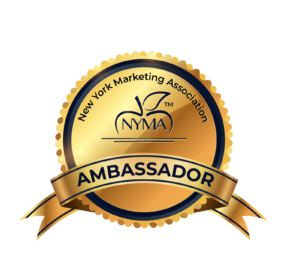Very few marketers are the “biggest” in their field. Just being the largest in a market is a rarity. We have spent more of our time working with Davids, not Goliaths. But even Goliaths do not like to throw their money away. When competing against the big dogs we are always finding ways to outspend the competition, without actually spending more.
To be clear, “outspend” is not about increasing dollars, rather it is increasing efficiency and effectiveness with our budget. Increase your share of voice without any additional outlay of money and you improve your ability to increase market share.
How to Start Efficient Spending
Always start with your objective. Define the business goal in plain language. Do you need qualified leads, store visits, or booked demos? Then map one or two primary KPIs to that goal. Tie your Cost Per Lead(CPL) to lead quality, not volume alone. Include other parameters like Customer Acquisition Cost (CAC) and Return on Ad Spend (ROAS). Finally, balance the need to brand with the requirement to increase demand before you place a single ad buy.
You Need Engagement
Cheap media is not a win if no one notices. Attention is scarce today. People are stretched thin. Viewability alone does not prove attention or impact. Therefore, plan for attention, not just impressions. Use attention-based quality scores such as view-to-completion. These scores predict outcomes better than traditional metrics. They help you buy high-quality impressions that actually move people.
Build A Smart Sales Funnel
Build a smart ad funnel to reduce waste. Start with Awareness media. Use education and proof the Engagement phase to qualify interest. Suppress past converters. Cap frequency by stage. That reduces paying twice for the same person. Programmatic tools make this practical across channels, including CTV. As a result, you buy more unique reach for the same budget.
Keep refining your funnel. Creative fatigue sets in faster than most expect. Refresh assets before performance drops. Strong creative wears out slower and works harder. That helps your advertising feel bigger without extra spend.
Eliminate Duplication
Plan for reach without redundancy. Deduplicate reach across publishers and devices, especially in CTV. Frequency skews are real. A minority of homes often get most of the impressions. Meanwhile, many homes see nothing. That is waste. Fix it with platform-level frequency caps and cross-publisher identity. You will look larger because more people actually see you.
Always look for efficiencies. Daypart when your audience is most responsive. Tighten geos to where conversion rates run high. Finally, negotiate added value. Ask for bonus spots, content reads, or a remnant billboard. These add scale without extra cash outlay.
Use first-party data to its fullest. Upload CRM audiences to find more people who look like your best customers. Exclude low-value segments to cut waste. Test first-party data segments against third-party data. You may find new audiences.
Utilize Email
Utilize email marketing to compound your media. Ads spark interest, email converts interest into action. Send timely, relevant messages that continue the conversation. Nurture prospects who have made an inquiry. Some businesses have few repeat customers, like personal injury. But happy clients are great referral sources. Stay top-of-mind with email. Email is inexpensive. A single conversion may worth all of the effort.
Manage frequency, pacing, and attention together. First, set channel-level and holistic frequency caps. Next, pace budgets into peak conversion windows. Avoid overspending when your buyers are offline. Finally, monitor attention and creative decay weekly. These habits protect your ROI. They also make your Advertising feel omnipresent without waste.
Focus on Creative
Make creative work harder than your budget. Build modular assets so you can test openings, offers, and hooks fast. You need to plan carefully but it saves time and money. Vary the first two seconds in video. Lead with the brand when attention is weak. Evidence from attention studies shows brief but real attention can still drive outcomes. So, design for attention and clarity.
Focus spend where it converts. Tighten your radius to proven ZIP codes and DMAs. Use location references to capture local intent. Then match message to moment. A smaller, smarter footprint will often improve cost-per-conversion metrics. At the same time don’t get so hyper-focused you don’t have enough reach to be successful. Aim for a balance.
Always Be Optimizing
Measure, measure, measure. Track days, times, devices, placements, and creatives, end to end. Look beyond cost-per-click (CPC) to reach, effective frequency, and lift. Establish a look-back window to determine what prospect actions impact conversions. Then analyze assisted conversions so you do not starve upper-funnel channels. When you judge channels by overall contribution, smarter optimizations follow. Your same budget now acts bigger.
Always be optimizing but do it with a plan. Each week, adjust bids, budgets, negative keywords, and rotations. Every month, clean audiences, check frequency distribution, and review engagement numbers. And quarterly, examine the funnel, test geos, and re-balance brand and calls to action. This cadence compounds advantages. Over time, you look and feel larger in market.
Build reporting that drives decisions. Use a simple scorecard. Show spend, reach, engagement, CPC or CAC, and ROAS. Find pockets of waste then move dollars fast. The goal is not prettier reports. The goal is a tighter feedback loop that increases impact.
Conclusion
Now, put it together as your process. Concentrate spend in high-attention inventory. Cap and deduplicate frequency to buy more unique reach. Use first-party data and email to convert more of what you already reach. Prove success before you scale. Then scale only the winners.
This is how an Advertising Agency can help you outspend the competition without actually spending more. It is disciplined media planning and buying that creates the effect of a much larger advertiser. When you treat engagement, reach, and incremental growth as core metrics, your media starts punching above its weight and your Lead Generation does too.



